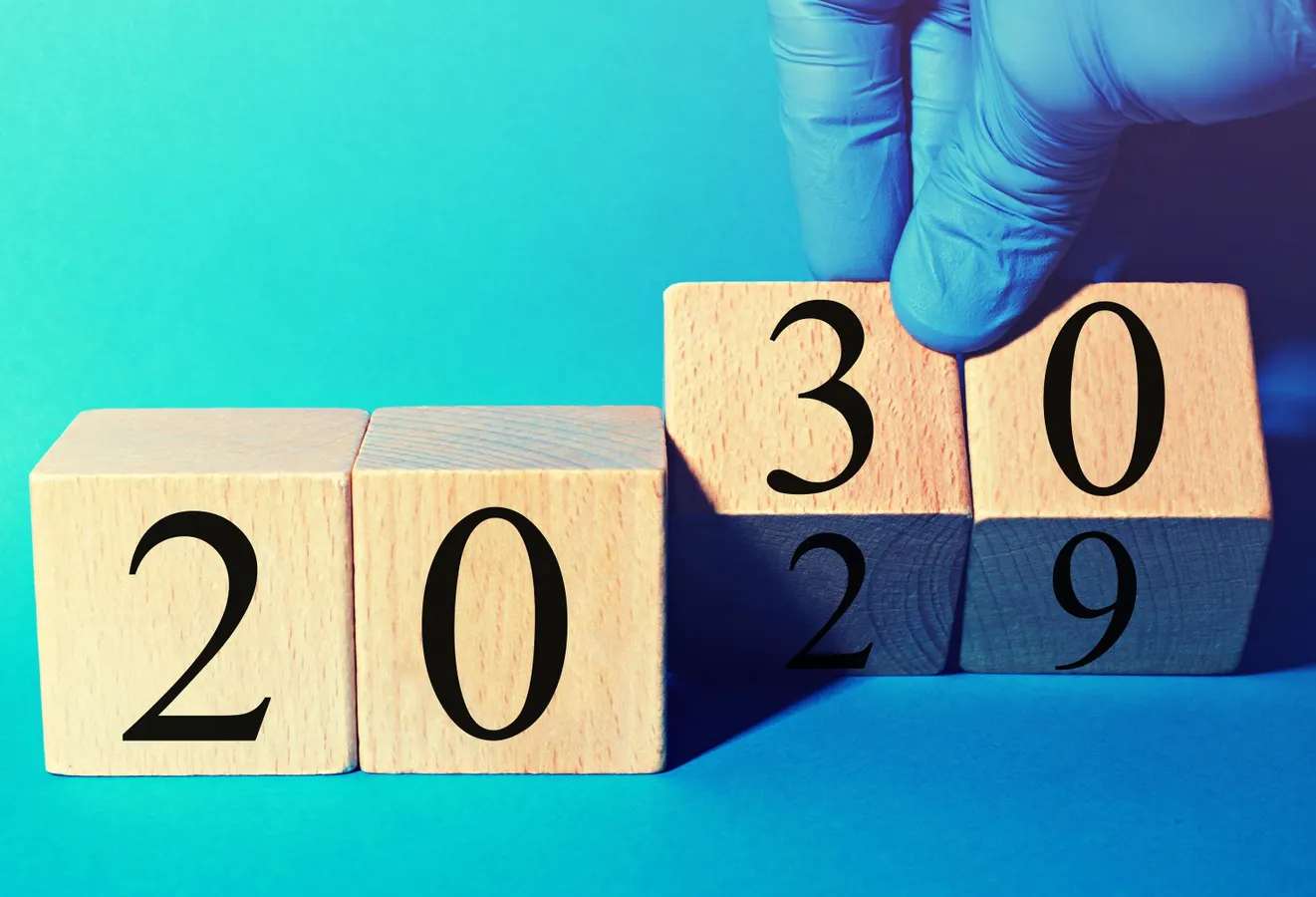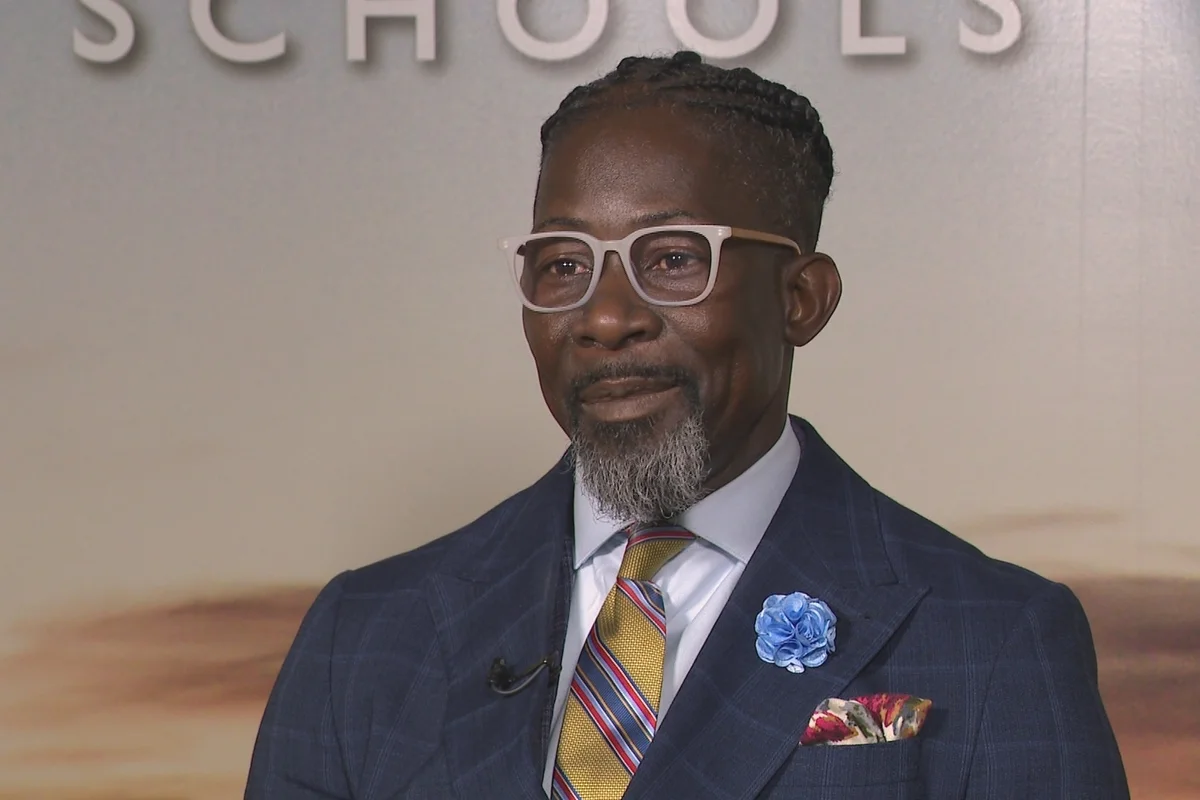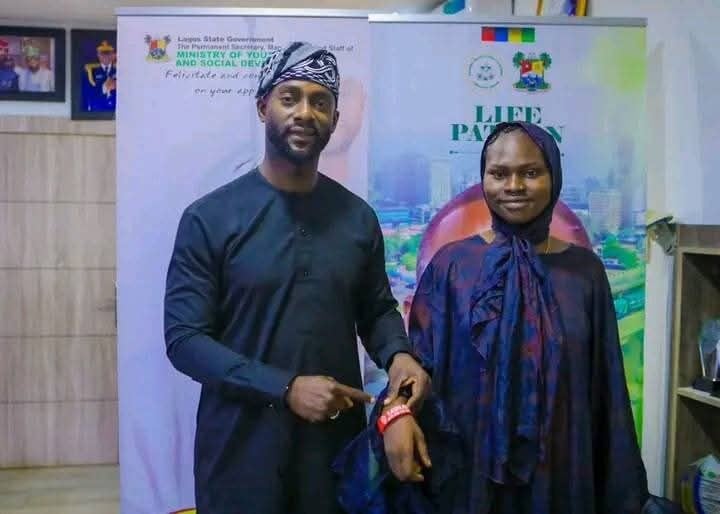By Contributor,Cornelia C. Walther
Copyright forbes

Hand wearing a glove changing the year to 2030 with wooden cubes.
We are in the final stretch of Agenda 2030 – and a sobering reality emerges: only 18% of the Sustainable Development Goals are on track, with nearly half progressing too slowly and close to a fifth even regressing. This trajectory mirrors the uneven progress of the Millennium Development Goals before them, revealing a fundamental flaw in our approach to global development. The time has come to acknowledge that incremental improvements to existing frameworks will not deliver the transformative change our world desperately needs. Instead, we must embrace Hybrid Development Goals — a new paradigm that harnesses the complementary power of natural and artificial intelligences for human and planetary flourishing.
The Systemic Failures Of Linear Development Approaches
The MDGs, despite some notable successes, suffered from critical structural limitations that the SDGs have largely perpetuated. Perhaps the biggest failing of the MDGs was their lack of critical analysis of the fundamental causes of global poverty and the persistently high levels of regional disparity, reflecting what systems theorists recognize as a fundamental category error: treating symptoms rather than addressing root causes.
Simplicity, numerical targeting and consensus are not only the key strengths of the MDGs as a mobilizing tool. But used for planning, simplicity leads to reductive, numerical targets that cause distortions, and consensus that preserves the status quo. This reductionist approach ignored the complex, interconnected nature of global challenges, creating what perverse incentives — outcomes that reward achieving narrow metrics while potentially undermining broader systemic health.
The SDGs attempted to address this through increased complexity — expanding from 8 to 17 goals — but complexity without intelligence often creates paralysis rather than progress. One of the major MDG failures is the fact that the success of the goals was not experienced equally across the globe, and this pattern continues under the SDGs, revealing that the fundamental architecture remains flawed.
Navigating The Hybrid Tipping Zone
We find ourselves in a hybrid tipping zone — a critical inflection point where four interconnected dynamics are accelerating toward a planetary crisis of individual agency decay and collective capability paralysis:
MORE FOR YOU
Agency Decay (Micro Level): Individuals increasingly feel powerless to effect meaningful change, leading to learned helplessness and democratic disengagement. Social media algorithms amplify divisive content while genuine civic dialogue deteriorates, creating a dangerous series of falsification cascades (individuals suppress their true beliefs to publicly align with what they perceive to be the majority opinion; this creates a false public consensus that can gain momentum, amplifying the perceived social pressure and influencing more people to misrepresent their views). This dynamic is now accelerated with commercial AI..
AI Mainstreaming (Meso Level): Institutions are rapidly adopting AI systems without adequate consideration of their social potential or risks. Most current AI deployment focuses on efficiency and profit maximization rather than human flourishing, missing enormous opportunities for prosocial AI — systems tailored, trained, tested, and targeted to bring out the best in and for people and planet.
Artificial Intelligence Superpower Competition (Macro Level): Nations are racing to achieve AI supremacy, often at the expense of global cooperation on shared challenges. This zero-sum mindset undermines the multilateral collaboration essential for addressing planetary-scale problems.
Planetary Boundary Crossings (Meta Level): We are simultaneously breaching multiple planetary boundaries, creating irreversible damage to Earth’s life-support systems. Climate change, biodiversity loss, and biogeochemical cycles are accelerating beyond safe operating spaces for humanity.
These dynamics are not merely parallel challenges — they are mutually reinforcing, creating a domino chain of cascading failures as the collapse of one component in an interconnected system triggers the failure of other components, progressively worsening the situation until the entire system breaks down, threatening civilizational stability and planetary survival.
The Prosocial AI Opportunity: A Quadruple Win Framework
The solution lies not in abandoning technology but in deliberately designing prosocial AI — artificial intelligence systems specifically architected to generate positive-sum outcomes across four critical dimensions:
Pro-People: AI that enhances human agency, capabilities, and dignity rather than replacing or diminishing them. This includes personalized education systems that adapt to individual learning styles, healthcare AI that democratizes access to expertise, and governance platforms that enable genuine participatory democracy at scale.
Pro-Planet: AI that accelerates ecological restoration and regenerative practices. Smart grids that optimize renewable energy distribution, precision agriculture that minimizes environmental impact while maximizing food security, and early warning systems that help communities adapt to climate change.
Pro-Profit: Sustainable economic models that create value through positive externalities rather than extractive practices. AI-enabled circular economy platforms, impact investment optimization, and new business models that reward environmental and social benefits alongside financial returns.
Pro-Potential: Systems that unlock latent human and natural capacities. AI tutors that help every child reach their potential regardless of socioeconomic background, research acceleration platforms that democratize scientific discovery, and creative tools that enhance rather than replace human imagination.
This quadruple win approach represents what economists call “Pareto improvement” at planetary scale — making progress on all dimensions simultaneously rather than trading them off against each other.
Hybrid Intelligence: The Key To Exponential Impact
In a hybrid future neither human intelligence alone nor artificial intelligence alone can address challenges of this complexity and scale. We need hybrid intelligence — the emergent capabilities that arise from the complementary integration of natural and artificial cognitive systems.
Human intelligence excels at contextual understanding, ethical reasoning, creative synthesis, and meaning-making. Artificial intelligence excels at pattern recognition, computational processing, optimization, and scale. When properly integrated, they create capabilities that neither possesses independently.
Consider three examples of hybrid intelligence in action:
Personalized Learning at Scale: AI tutors that adapt to individual learning patterns while human teachers focus on mentorship, creativity, and emotional intelligence. Finland’s Eduten platform, used in 50% of Finnish schools, personalizes math problems using AI and shows a 25% rise in test scores and a 30% drop in homework resistance.
Regenerative Agriculture Networks: AI systems that monitor soil health, weather patterns, and crop genetics while farmers contribute traditional knowledge, local adaptation, and holistic ecosystem understanding. Microsoft’s FarmVibes.AI helps growers analyze the impact of regenerative practices like reduced till and cover cropping on soil carbon and financial profitability, whereas the 100 Million Farmers Initiative demonstrates how AI-enabled smart contracts make carbon payments faster and more cost-effective.
Democratic Innovation Platforms: AI that can process vast amounts of citizen input and identify unexpected patterns while human facilitators ensure inclusive participation and navigate value conflicts. Taiwan’s vTaiwan platform brings citizens and government together in online and offline spaces to deliberate on national issues, successfully addressing complex policy challenges like Uber regulation.
Four Concrete Recommendations For Decision-Makers
1. Establish Prosocial AI Development Standards: Create mandatory impact assessment frameworks for AI development that evaluate systems across the quadruple win dimensions. Require technology companies to demonstrate how their AI contributes to human flourishing, planetary health, sustainable economics, and human potential before deployment. The EU’s AI Act provides a starting point, but we need specifically prosocial criteria embedded in development standards.
2. Launch Hybrid Intelligence Research Consortiums: Fund large-scale, transdisciplinary research programs focused on human-AI collaboration for global challenges. These should bring together cognitive scientists, AI researchers, domain specialists, and affected communities to develop hybrid solutions for climate adaptation, education equity, and democratic governance. The scale should match the Manhattan Project or Moon Landing — civilization-level challenges require civilization-level responses.
3. Create Global Commons for Prosocial AI: Establish international platforms where prosocial AI tools and datasets can be shared as global public goods. Just as the internet protocols enabled unprecedented collaboration, we need open-source AI infrastructure specifically designed for positive social impact. This includes multilingual educational AI, open climate modeling systems, and democratic participation platforms that any nation can adapt and deploy.
4. Implement Hybrid Development Goal Frameworks: Redesign international development targets around hybrid intelligence outcomes rather than simple metric achievement. Instead of “reduce poverty by X%,” aim for “create AI-enabled economic opportunity systems that empower local communities to design their own prosperity pathways.” This shifts focus from external intervention to building endogenous capacity for continuous adaptation and improvement.
Conclusion: From Digital Divides To Analogue Abundance
The failure of both MDGs and SDGs is supported by the assumption that natural and natural capabilities are static, requiring us to optimize allocation of scarce resources. Hybrid intelligence is anchored in the quest for lifelong learning, and organic growth. Each of us is an organically evolving kaleidoscope, we change as long as we live as do the systems that we are part of, and that are part of us. When we properly integrate human kindness and universal values of generosity and compassion with artificial intelligence capabilities, we move from managing trade-offs to creating abundance. This is not utopian thinking — it’s systems thinking applied to the greatest challenges of our time. Resources exist. Technology exists. Scientific understanding exists. What we need now is the individual and institutional will to architect our shared future around human flourishing with planetary dignity.
We have a choice – doing more of the same, while hoping for different outcomes or embracing the exponential potential of hybrid intelligence to create a world where everyone has a genuine opportunity to fulfill their inherent potential.
Negotiations for the post-2030 Agenda have begun, the time to prepare for hybrid development goals is now. Which direction do we choose?
Editorial StandardsReprints & Permissions



